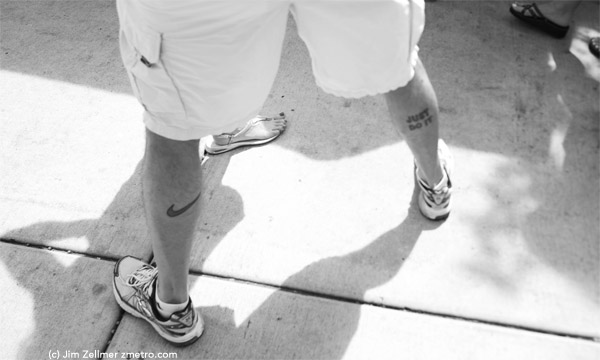It was Saturday night, and I was at the local Cheesecake Factory with my two teen-age daughters and three of their friends. You may know the chain: a hundred and sixty restaurants with a catalogue-like menu that, when I did a count, listed three hundred and eight dinner items (including the forty-nine on the “Skinnylicious” menu), plus a hundred and twenty-four choices of beverage. It’s a linen-napkin-and-tablecloth sort of place, but with something for everyone. There’s wine and wasabi-crusted ahi tuna, but there’s also buffalo wings and Bud Light. The kids ordered mostly comfort food—pot stickers, mini crab cakes, teriyaki chicken, Hawaiian pizza, pasta carbonara. I got a beet salad with goat cheese, white-bean hummus and warm flatbread, and the miso salmon.
The place is huge, but it’s invariably packed, and you can see why. The typical entrée is under fifteen dollars. The décor is fancy, in an accessible, Disney-cruise-ship sort of way: faux Egyptian columns, earth-tone murals, vaulted ceilings. The waiters are efficient and friendly. They wear all white (crisp white oxford shirt, pants, apron, sneakers) and try to make you feel as if it were a special night out. As for the food—can I say this without losing forever my chance of getting a reservation at Per Se?—it was delicious.
A model that everyone wants
The Mittelstand, Germany’s thriving strand of midsized, family-owned export champions, are the envy of the world. “We should all learn the lessons from the successful Mittelstand model,” George Osborne, Britain’s chancellor of the exchequer, told a business conference in Manchester last year.
But just what is the model? Conversations with executives of some of the best-known Mittelstand offer a clue to the qualities others might emulate.
Avoid debt, maintain independence and focus on the long term
Audio company Sennheiser’s state-of-the art facility in the village of Wedemark, near Hannover, sits just a few strides from the cottage where Fritz Sennheiser founded the business in 1945. The company has always avoided debt, partly to focus on growing at a pace it could manage but also to maintain its autonomy.
Smartphone apps now playing doctor
Health app developers initially focused on consumer diet and exercise, said Brian Dolan, editor of Boston-based MobiHealthNews.com, which tracks advances in mobile health and medical technology. “Now we’re seeing them look into more serious health conditions where there’s a real need for innovation.”
Glen Stream, president of the American Academy of Family Physicians, sees an “explosion” of mobile medical apps, and gives the trend a qualified endorsement. He’s an “iPhone guy” who uses about 20 medical or health-oriented apps.
What Makes a Great Logo?
A trained eye can tell when a logo is really thought deep about or just whipped up without much thought. The type of logo that seems to require the least effort is when the type choice is not customized or easily recognizable. This is usually accompanied by a recognizable picture combined with arrows, swooshes, or other distracting elements- trying to depict WHAT a business does/is, not WHO a business is.
A logo of this standard is easily procured at sites like 99 Designs where logo design happens without any brand discovery on the designer’s behalf. The logos are dictated and picked based on if the client likes it or not, but no professional advisement is dispensed. Many of the logos are half-baked recycled concepts that designers scrap up to make a quick buck. A logo produced this way might very well resemble many others. The public is becoming increasingly aware and able to recognize when a logo looks like it’s from 99 Designs. While it is possible to get a good logo there, the chance it will be a great logo are drastically reduced.
Uncommonly Unreasonable
Two of his rules of business, in particular, are rarely found in books on entrepreneurship. One is that, rather than being the pioneer, it is often better to be second with a new idea—as he was in launching KB Home, which became his first Fortune 500 firm, selling houses that were cheaper because they had no basement, a controversial idea at the time copied from a firm in another state. (“The second guy can just charge along the path the first guy has marked, avoiding the rough patches where he stumbled.”)
Government Surveillance: Little Peepers Everywhere
Wiretaps, which have increased almost tenfold since data was first reported in 1969, are only the tip of the surveillance iceberg. In 2011 federal and state courts approved a total of 2,732 wiretaps; but government agencies made over 1.3m requests for data to mobile-phone companies. That figure includes wiretaps and pen/traps, but it also includes requests for stored text messages, device locations and tower dumps, which reveal the presence of everyone—suspects and not—within range of a particular mobile-phone tower at a particular time. Most of these requests require no warrants at all. Sometimes all it takes is a subpoena from a prosecutor.
Internet companies have also seen a sharp rise in requests from law-enforcement agencies for information about their users. Between July and December 2010 Google received 4,601 requests; in the same period last year that number jumped to 6,321. Among the things that Google is typically asked for are account information and location data. Twitter, a microblogging service, received 679 requests from American authorities for information about users in the first half of this year, which is more than it got in all of 2011. The firm says it complied with three-quarters of these requests, though it does not say whether it handed over all or simply a fraction of the information requested in each case. Google, which says it complied with 93% of the requests from American officials in its most recent reporting period, is similarly vague about what it coughs up.
Madison Farmer’s Market Protest Sign: “When Drones Fly, Children Die”

Commitment: Nike Tattoos

Dan Chung’s Olympic Smartphone Photoblog
2012 has been the year that smartphones have started to dominate the world of still photography. Kodak has fallen apart, the cheap digital camera market is in decline, Facebook has offered $1 billion for Instagram. How would a smartphone camera in the hands of a professional photographer perform during this year’s biggest sporting event?
Why Capitalism Has an Image Problem
The U.S. was created to foster human flourishing. The means to that end was the exercise of liberty in the pursuit of happiness. Capitalism is the economic expression of liberty. The pursuit of happiness, with happiness defined in the classic sense of justified and lasting satisfaction with life as a whole, depends on economic liberty every bit as much as it depends on other kinds of freedom.
“Lasting and justified satisfaction with life as a whole” is produced by a relatively small set of important achievements that we can rightly attribute to our own actions. Arthur Brooks, my colleague at the American Enterprise Institute, has usefully labeled such achievements “earned success.” Earned success can arise from a successful marriage, children raised well, a valued place as a member of a community, or devotion to a faith. Earned success also arises from achievement in the economic realm, which is where capitalism comes in.